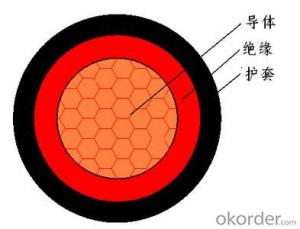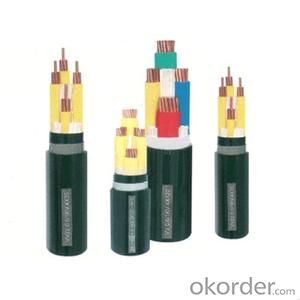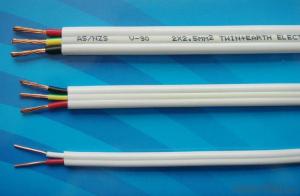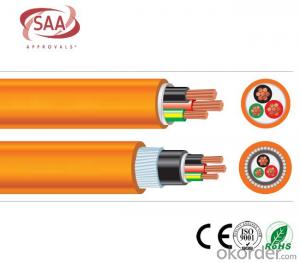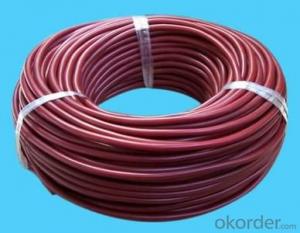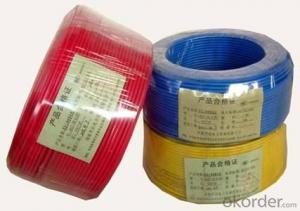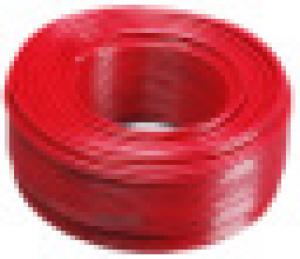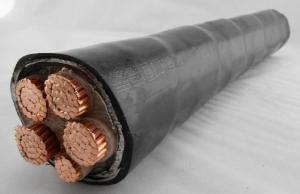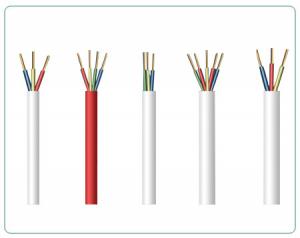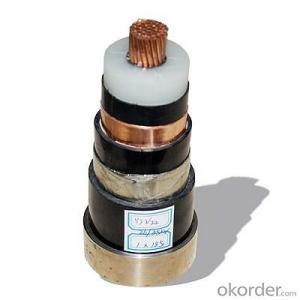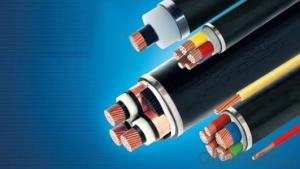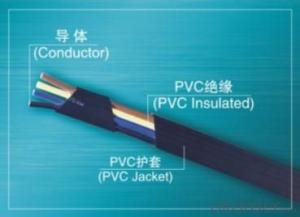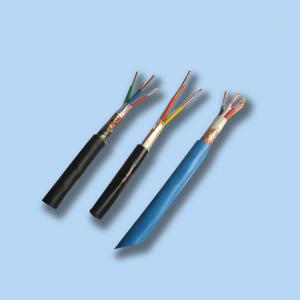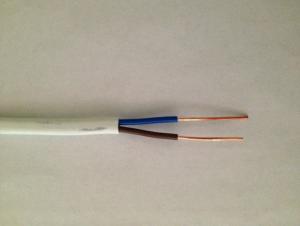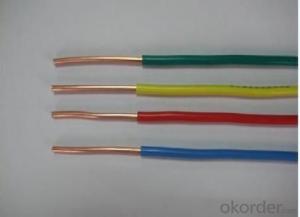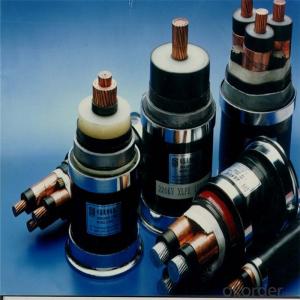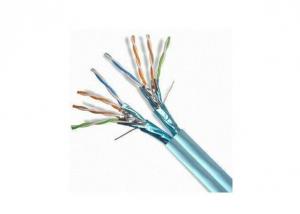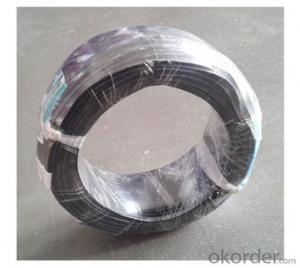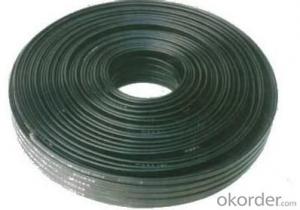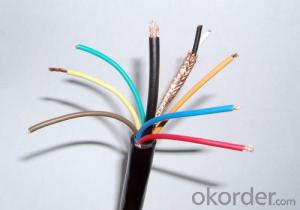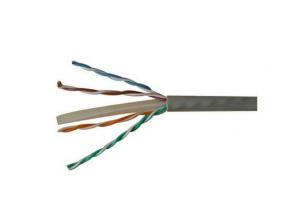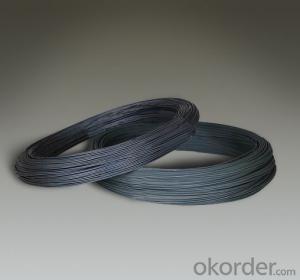PVC Insulated and Sheathed Building Electric Cable Wire
- Loading Port:
- China Main Port
- Payment Terms:
- TT or LC
- Min Order Qty:
- -
- Supply Capability:
- -
OKorder Service Pledge
OKorder Financial Service
You Might Also Like
1. Product Description:
PVC insulated wires and cables of 450/750V and below are mainly applied for hard wiring of electrical appliances, electric apparatus, instruments, telecommunication equipment, power lighting, and buildings with the rated AC voltage of 500V or DC 1000V. PVC insulated wires belong to the series of laying electric wires, which is mainly suitable for laying at the fixed places.
The rated voltage of the wires should equal to or higher than the rated voltage of the system when wires are used at AC system. If wires are used at DC system, the rated voltage of system should lower than 1.5 times as high as rated voltage of cable and wires.
2. Product Characteristic:
1, heat resistance performance: the XLPE has a very good heat resistance performance of the network.
2, insulation performance: XLPE maintained the original good insulation characteristics of PE, and the insulation resistance to further increase. The dielectric loss tangent is very small, and the temperature has little effect.
3, mechanical properties: because the intermolecular built a new chemical bond, XLPE hardness, stiffness, wear resistance and impact resistance were improved, which make up the PE is vulnerable to the shortcomings of environmental stress cracking.
4, resistance to chemical characteristics: XLPE has a strong acid and alkali resistance and oil resistance, the main product of the combustion of water and carbon dioxide, the environment is less harmful to meet the requirements of modern fire safety.
3.Specification:
Electric cable wire:
1; 450/750V, copper or aluminum core
2; ISO9001-2008,IEC, ASTM
3; factory direct sales
4;best service
Packaging Details: | Circles or drum ,or according to your request |
Delivery Detail: | As your request |
4. Reference Picture:
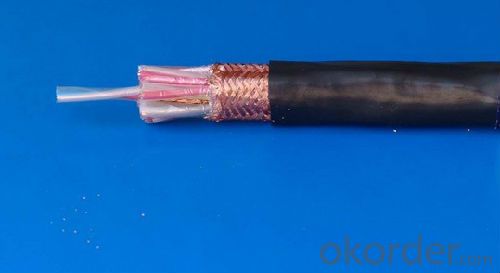
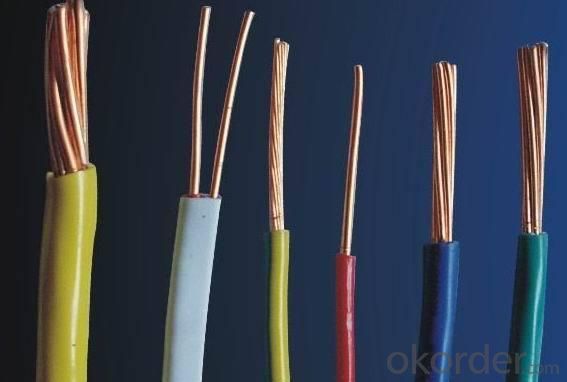
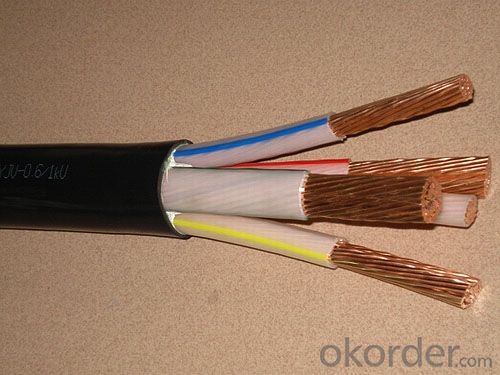
- Q: component of electrical wiring system according the appropriate street light. the voltage power supply and herzt(hz) using for street light.
- Most standard street lights are owned by municipalities, not by private owners. They are typically cobra head style fixtures and are fed with underground wiring from a utility transformer. Some smaller circuits may be 240 volts, but larger and longer circuits are usually 480 volts due to limitations on voltage drop. The most efficient lighting source is high pressure sodium, which has an orange glow. This provides the best lumens per watt. In higher-end areas, metal halide may be used as a light source, which has a white glow. This provides better color rendition, but has fewer lumens per watt than high pressure sodium. All American electrical systems are 60 Hertz.
- Q: HelloRecently I installed 100W Bulbs in my home and noticed that the light fixtures became extremely hot and within 10 minutes they had started melting the insulation. So i looked at the wire and found that it was 18 Gauge and found that through all fixtures of the home some of them with at least 20 feet of wiring is this up to code? I also noticed that many sockets would not allow a laptop to charge or even a cell phone what could be the cause of this? I'm in ontario canada.
- I believe that Ontario codes requires that NMD90 14 gauge wire be used.
- Q: 1.5 square copper wire can load much current and wattage
- Different voltage levels of the cable placement spacing is generally not less than 100 mm, up and down the general level of the lower level in the top.
- Q: Hi everyone.We moved in a new house (not an appartment). The basement is finished. I am not usually be down there yet, so I can say it is not in use. I turned the separately partial heater down to 50 F degrees. The basement has some problem, the electric down there seems not steady. When I turn the neon lights on, it keeps blinking for the first 30 seconds. When I touch the switchers, it shocks me a little bit.For addition, my house is like 1600 square feet, 2 bed rooms, 1.5 baths. I keep the central air heater (pretty new, 2009) at 78 F degrees, and the electric bill first month came at $288 saying I used 2606 kWh for 20 days. I doubt that my basement's electrical wiring set-up is broken somewhere, so the electric leaks or wastes somehow.Questions are: Is it the first bill $288 for my house size weird? How do I test if my electrical wire set-up is not wasting my money?Thanks everyone.
- Check the fixture for correct polarity,the 'hot' wire goes to the black ballast wire. Also try high output neon fixtures which work better in lower temperatures
- Q: Found a wire in my attic right by the hatch with about 2 of it burnt. I didn't see any bare wire exposed, but pretty close. It's not at a connection. There is a little bit of insulation singed around it.Maybe I nicked it when I climbed up there a few months ago? Maybe a squirrel or something was gnawing on it? I didn't see or smell anything dead.Or could it be it's just wired wrong?I'm pretty worried because it's connected to my smoke detectors that were wired last fall. I have 6 of them and they are all connected to their own separate breaker. So if it starts a fire and shorts them out I would never know.
- Call a qualified professional electrician to inspect your wiring make any needed repairs. You need to do this for your peace of mind. More than likely the burn is caused by an overload which is very dangerous and can cause a fatal house fire. Call an electrician now.
- Q: Home water heater is 5000W, said the wire is 4 level, you can press the big open? The
- Formal cable itself has a waterproof function, as long as the cable at the terminal (such as the junction box) using a sealed connector, do a good job on the seal, there is no need to superfluous. If you need to protect the cable, using PVC electrical insulation tube can be.
- Q: I have a single closet light that I need to extend about 3 feet. I've already bought the junction boxes, wire nuts, and wire retaining pins.However, I bought 14/2 wire, and I've noticed the wire I plan to extend says 12/2 on it. Is this a problem? Should I return it and get 12/2 so it matches exactly, or will it work okay? What's the difference anyway?Thanks
- In general this is not allowed under the NEC in the US. Any light in a closet must be at least 24 away from all clothing hangers and shelves. if the 14-2/WG is less than 6 feet in length, then a special condition for a fixed load will permit this in some cases. The best solution is to have a qualified professional electrician do the work according to the local codes. These may prohibit the fixed load exemption.
- Q: I just bought a 30 year old house. My family is just starting to replace the roof, because the shingles and a lot of the plywood is damaged. My dad pointed out that the power enters the house through the roof, and said I should call the power company to have it routed through the side of the house. Is this necessary? Will it be costly? Thank you!
- It will probably require you hire a licensed electrician to move the wires to a new panel on the side of the house. After it's been inspected, the power company will come and change the service from the old location to the new.I can't tell you if they charge for this. A simple phone call to your power company's engineer should answer that.
- Q: I ordered and received a violin makers bending iron in the mail. There is a ceramic box that covers some wires that is broken in half. Must have been in the shipping. I contacted the seller who said I should just glue it or wrap electrical tape around it. Does this sound right? Thanks so much for your help.
- sure, you can super glue the ceramic together, just make sure no electrical parts are exposed (like any energized metal parts). but i believe you can demand a new one if it was damaged during shipping
- Q: can we replaced it with the normal plastic insulated wire?
- NO!!! It is for high heatJust get a new toaster
Send your message to us
PVC Insulated and Sheathed Building Electric Cable Wire
- Loading Port:
- China Main Port
- Payment Terms:
- TT or LC
- Min Order Qty:
- -
- Supply Capability:
- -
OKorder Service Pledge
OKorder Financial Service
Similar products
Hot products
Hot Searches
